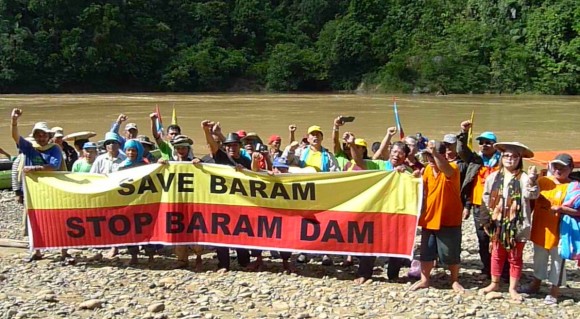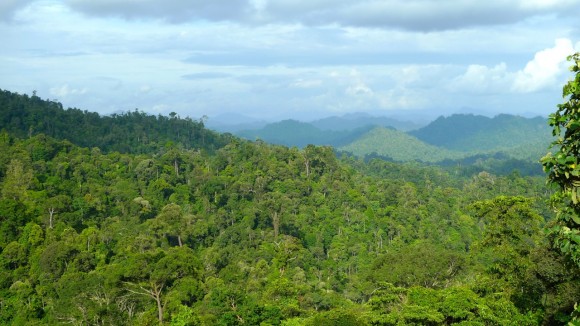POLITICIANS today ignore environmental issues at their peril. The year 2012 saw major environmental protests against controversial projects in Malaysia. Thousands protested against the Lynas rare earth refinery, the use of cyanide at a gold mine in Pahang and the multibillion petrochemical complex in Pengerang, Johor. In Sarawak, indigenous peoples reluctant to be uprooted from their ancestral homes to make way for the Murum Dam mounted a blockade at the site for almost a month.
It is heartwarming to witness the rise of resistance from environmental groups towards potentially hazardous mega projects in this country. Our citizens are asserting their rights, and holding governments and corporations accountable to the people and the environment.

With the general election looming, activists will likely ramp up their respective campaigns. What environmental “hot potatoes” will politicians have to deal with carefully this year to avoid public anger and opposition?
Lynas
The Lynas rare earth plant has been a major rallying point for environmental issues. Himpunan Hijau successfully staged several anti-Lynas rallies in 2012. There was a protest in Kuantan in February 2012, a 300km march from Kuantan to Dataran Merdeka in November 2012, and a rally at the refinery’s door step on New Year’s Eve.
It is unlikely the protests will stop there. Despite the opposition, Lynas Corp began production in November 2012 after obtaining the official Temporary Operating License (TOL) from the Atomic Energy Licensing Board (AELB) in September 2012. Federal ministers have repeatedly claimed the company must ship its waste abroad, but Lynas Corp insists there is no such requirement under the TOL.
It remains to be seen whether Lynas will be able to recycle its low-level radioactive waste into safe commercial products. It can also help sooth public concerns by being transparent about its waste management process. As the regulator, the AELB must also play its part to ensure the company deals with its waste safely and responsibly. Many activists, however, are still adamant the plant should be shut.
Sarawak mega dams
Construction work for the 944MW Murum Dam is expected to conclude this year. About 1,400 Penans and Kenyahs will be resettled to Tegulang and Metalun – 46km upstream from the dam.
It may be too late to stop the Murum Dam, but I think campaigners still have a fighting chance to pressure the government to scrap the upcoming Baram Dam. The 1,000MW hydropower project will displace some 20,000 natives currently living in Baram and submerge 412 square km of forests – nearly double the size of Kuala Lumpur.
Indigenous people in the hornbill state formed the Save Sarawak Rivers Network (Save Rivers) in February 2012 to oppose the dams. The activists travelled to Australia last year and successfully pressured state-owned dam operator Hydro Tasmania to stop assisting Sarawak Energy Bhd. Activists have been visiting villages to mobilise the people and Radio Free Sarawak has been disseminating information via its short wave radio.

The Sarawak government proposes to build a total of 12 mega dams under its Sarawak Corridor of Renewable Energy (SCORE) plan to “transform Sarawak into a developed state” by 2020. However, the Bruno Manser Fund, an international charity, criticised SCORE in its November 2012 report as an “outdated” development plan. A policy paper published by the National University of Singapore in March 2011 also doubted SCORE’s viability.
Sarawak Chief Minister Tan Sri Abdul Taib Mahmud has not bowed to public pressure to halt controversial projects. Nevertheless, the state’s indigenous peoples are increasingly bitter with his administration. They have already lost thousands of hectares of native customary rights land to loggers and plantation companies over the past few decades. Now, their homes are at stake due to the hydroelectric dams. Taib’s administration cannot afford to ignore the growing public dissent if it intends to stay in power.
Pengerang Integrated Petroleum Complex (PIPC)
The PIPC is an ambitious project to turn Pengerang into a petrochemical hub. Petronas is investing RM60 billion to develop the Refinery and Petrochemical Integrated Development (RAPID) project at the complex located at the southern tip of Johor. Some 3,000 residents from seven villagers, mostly fishermen and small-business holders, will have to be relocated to make way for the complex. A protest was held against the Pengerang project on 30 Sept 2012.
Environmentalists are also concerned that KuoKuang Petrochemical Technology Co will revive its controversial project, cancelled by the Taiwanese government in 2011, in Pengerang. A 2010 Chung Hsing University study found that the average lifespan of people living near the petrochemical project may be shortened by 23 days due to pollution. More protests may be in the pipeline if the government allows the Taiwanese company to resurrect its project here.
Moving towards sustainable development
An increasingly discerning electorate coupled with growing environmental awareness means that governments and corporations can no longer get away with sloppy environmental management. Instead of being defensive, the best way forward for the state and businesses is to engage the public proactively and be transparent about the details of the projects.
After all, if the mega projects are truly beneficial to local communities and harmless to the environment, they should be able to withstand public scrutiny, right? ![]()

Gan Pei Ling hopes the growing environmental resistance will help push the nation towards a more sustainable development path in the long term.


Phua Kai Lit says
It is very difficult to have confidence in the objectivity of the Atomic Energy Licensing Board (AELB)
when it has a profit-sharing scheme (0.05% of profits) with Lynas!
Jacqueline Ann Surin says
And how do you know this? What evidence do you have about AELB’s profit-sharing scheme?
TNG says
Phua Kai Lit. BN of course said AELB is good. But Lim Guan Eng also said AELB is professional and competent and should sue whoever said otherwise. So Phua, what do you know about AELB that both BN and LGE don’t? Please share with us what you know.